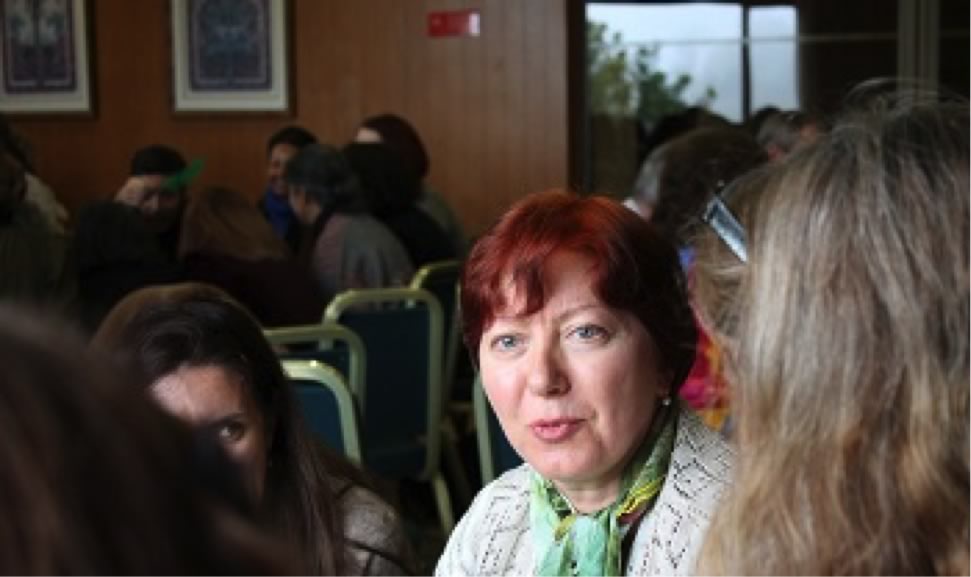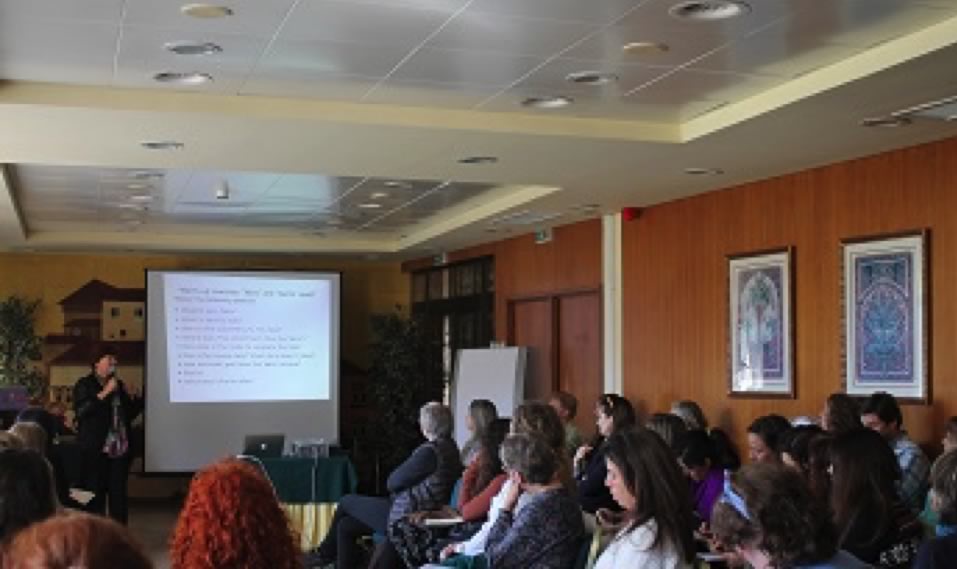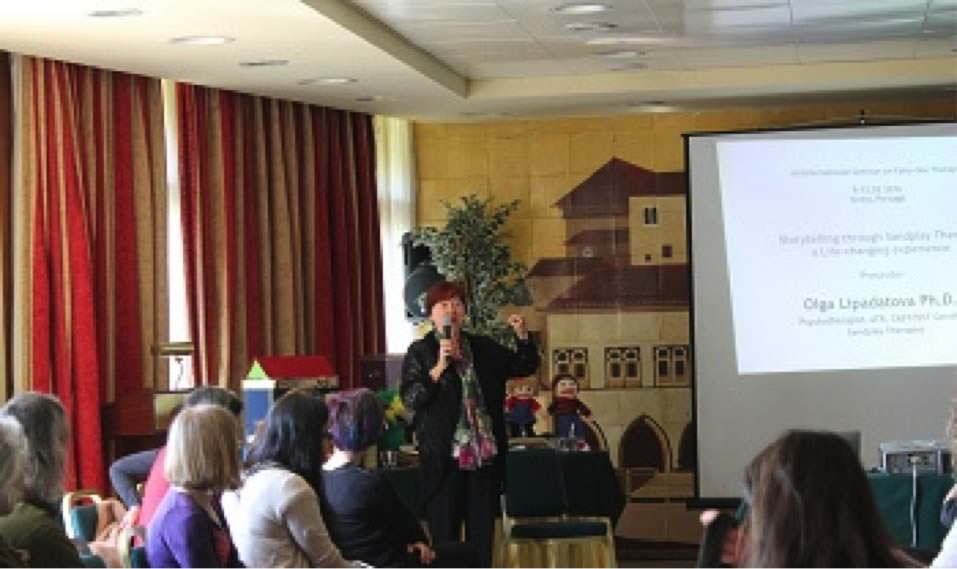Olga Lipadatova is a Certified Supervisor and Teaching Member of the Canadian Association of Sandplay Therapy (CAST), the International Society of Sandplay Therapy (ISST) and also teaches in Russia.
Olga holds a Master’s degree in Ancient History from Moscow State University and a Master’s degree in Creative Arts Therapies, Art Therapy, from Concordia University, Montreal, Quebec. She is the recipient of a Federal research grant for her Doctorate research at Concordia University focused on Sandplay Therapy.
She worked with six immigrant participants who told their stories through the Sandplay Therapy process. Since 2003, Olga has worked in Mental Health and community organizations, and in private practice as a psychotherapist, art therapist and counsellor. She has regularly presented at various national and international conferences. For a number of year she was a board member of the Art Therapy Association of Quebec. After that she served as a Board member and, presently, as president of the Canadian Association of Sandplay Therapy. Olga is a teacher and supervisor in Art Therapy and Sandplay Therapy in Canada and Russia. Since 2014, Olga has been working as a psychotherapist in private practice in Guelph, Ontario. She is and advocate of storytelling through art and sandplay therapy expression as a method of helping to make bring about individual and social change in life. Find out more about Olga: Olga Lipadatova
We had the great honour and privilege to attend OIga’s presentation during Moonluza’s II International Seminar on Fairy-tale and Storytelling Therapy. In 2017 we will have the chance to participate in a workshop co-facilitated by Olga and an Israeli therapist Shai Karta Schwartz.

Moonluza (Mo): Olga, how did your journey with Sandplay Therapy start?
Olga Lipadatova (OL): My journey started in 2000 when I began my studies in Masters Creative Arts Therapies programme at Concordia University. One of our Art Therapy teachers (now retired Prof. Denise Tanguay) brought our group of art therapy students to the facility where two sandplay rooms were set up. I had an ‘Aha-moment’ the second I walked into this room. Imagine you walk into a room full of shelves on which multiple figurines and objects are stored, with a table in the middle where two sandboxes are placed….
Mo: Can you tell us a bit more about this Therapy?
OL: Sandplay therapy started in Switzerland by Dora M. Kalff late 1950s as a psychotherapeutic approach for working with children. Today it is a quite well known modality and it also is used to work with adults. The core of it is that through spontaneous imaginative play in trays filled with wet or dry sand, people sculpt the sand and position miniature figurines and objects to create three-dimensional scenes or ‘worlds’. These ‘sandpictures’, as we call them, reflect the state of person’s inner world and mediate between it and outer world. Doing a sandplay process may encourage psychological healing in cases when psychic wounding had occurred. The latest neurobiological research shows that sandplay works through activation of the human psyche’s innate drive towards healing and wholeness which C.G. Jung wrote so much about.

Mo: Your presentation during Moonluza’s II Seminar in Sintra was based on Sandplay Therapy work with immigrants and your research conducted at Concordia University in Montreal, Canada. You said that you discovered that regardless of their country of origin all people share similar aspirations when they move to a new country of residence; they all want to create a better story for themselves and their children.And in this time of transition to a new reality the life story of every person can change dramatically, but to dream and create a new story is no simple task. This is a vey important matter in Europe at the moment as so many refugees seek their peace in different countries. Can you tell us a bit more of how your participants immerse themselves in a process of creating a new story and a new vision of their lives and how it actually can change their lives?
OL: It took me six years and 600 pages to answer this question. In short it comes to being able to open the doors for a new vision of person’s life in a new reality. One of the usual ways we deal with new challenges (and moving to a new country presents a lot of new challenges) is that we apply the tools which worked for us previously. But these tools were developed for a different reality and they might not be the most sufficient in the new circumstances. This is particularly true and complex when we speak of a new socio-cultural environment. When the person comes into the sandplay room the abundance of symbolic representations in the form of figurines and objects activates one’s ability to ‘play’ with them, just like children do. This process of ‘playing’ in what Ms Kalff called a ‘free and protected space’ allows dreaming beyond the immediate. In doing so people dare to create new reality, new story, the one which is much closer to inner need oof these people. As our psyche possesses the innate drive towards healing and wholeness, by going through a sandplay process the person resolves the inner conflicts and heal wounds, which brings ability to relate to the new outer reality in a new was consistent with it.
Mo: Do you sometimes choose stories for your participants/patients?
OL: I do not choose stories for my clients: they come from the inner reality of these people. As C.J. Jung explained we all share the pool of collective unconscious which manifests in the form of images and stories we all can relate to. This is why there are stories coming from different parts of the world which speak of similar events and have similar plots.


Mo: Do you believe that stories can heal?
OL: Yes, I believe that very strongly. I have seen it happening in my sandplay office many times. I have also experienced it in the Art therapy groups which I conducted. In those workshops every participant would find their place in a story which was told collectively in a group. By reenacting the story participants found out about their strengths and were able to work out the ending for the story which was empowering them. After having done that in a group it was much easier for them to build a new story in their real life, and i believe that is what healing is about. Similar approach will be used in a workshop which I will co-facilitate next year with Shai Karta Schwartz, a therapist from Israel.
Mo: Do you have a favourite story?
OL: I have many favourite stories. One of them is the ‘Ugly Duckling’ by Hans Christian Andersen which I think reflects every person’s individual story. It is a story of someone who was trying to belong and had to go through many trials before he found his inner beauty, realized his true nature and his belonging.
Mo: In March 2016 when participated in Moonluza’s II International Seminar on Fairytale and Storytelling Therapy, was it your first time in Portugal? How do you find this project?
OL: Yes, this was my first time in Portugal and I found it to be a country of infinite beauty and spirit, both in nature and people. Sintra, where Moonluza seminar took place was truly magical. Adriana, our hostess, managed to bring together a truly international gathering of professionals working with storytelling and fairytales. There used to be time when the wisdom of our ancestors was passed to the next generations through the stories. In Russia there is a saying which can be translated as follows: ‘A fairytale does not tell the truth but it carries a message which teaches the truth’. I think Adriana has created a unique event which is much needed today in the world which threatens to spin out of sensible and tangible reality…
Thank you very much for this interview. We are looking forward to seeing you again in Portugal!
August 2016




